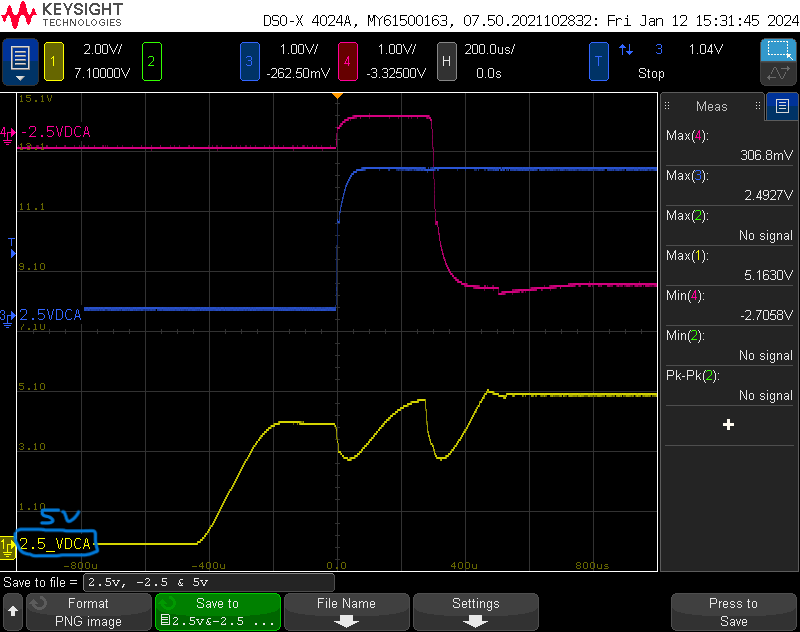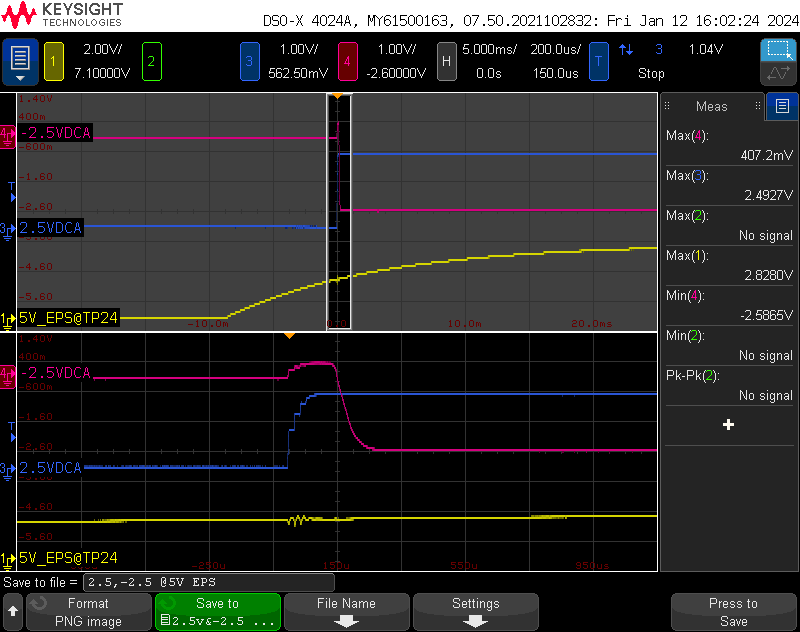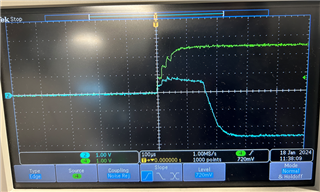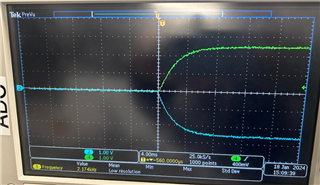Other Parts Discussed in Thread: LM25575, LM27762, , ADS1261,
Please also refer to my previous thread about LM25575 startup glitch as it is somewhat related to this.
We have observed some startup overshoot on -2.5V power supply connected to the ADC chip ADC114S08. See below waveform and the Power Supply tree.
This overshoot is not present when ADC power supply is disconnected from the charge pump output.
Can you please let us know what could be the reason for this overshoot and whether this is critical for ADC114S08 operation? How to prevent this? FYI, So fare we have not seen any failures or any ADC operation issues.
Appreciate if you could measure this on any of ADC114S08 evaluation board powered from bipolar supply and confirm its behaviour if it is related to our circuitry or it is inherit property of ADC114S08.
Let me know if you need any additional info.
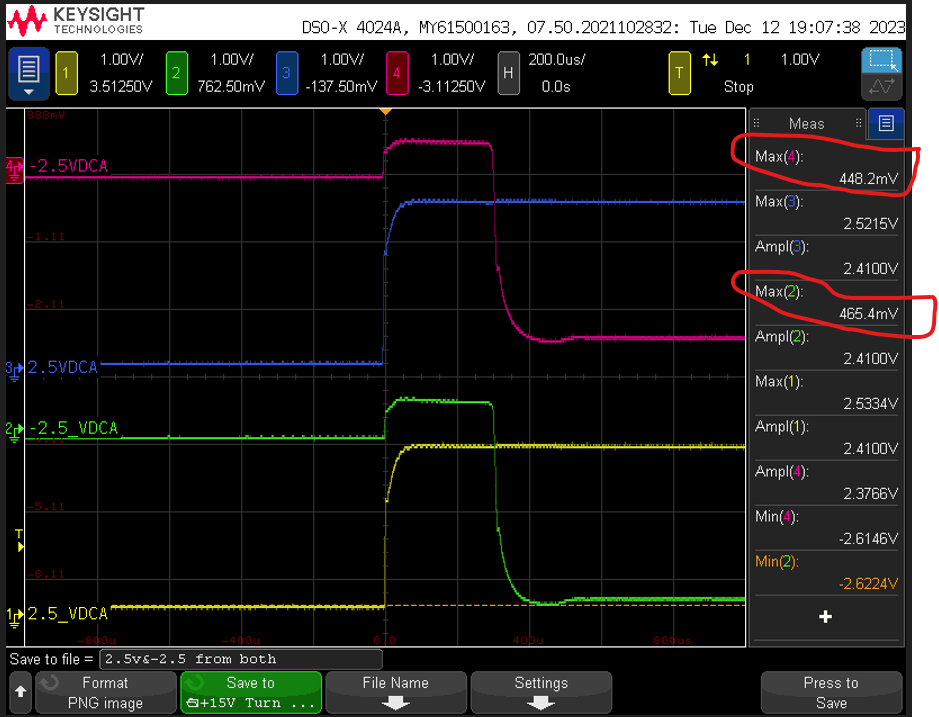
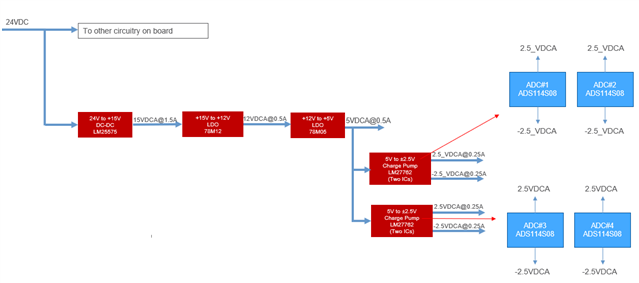
Also let me know how I can raise this as a ticket to TI FAE instead of discussing it on TI forum.
Thanks.



